Jodenbreestraat 17, 1011 NG Amsterdam Open daily: 11:00–18:00
20–25 May 2025 | exhibition continues through July
22 May | 15:30–16:30
24 May 2025 | 16:00–20:00
Sandra Keja Planken doesn’t just create art and collectibles—she creates worlds.
As a textile whisperer, glass shaper, and nature weaver, her work is soft, glowing, multi-layered, raw, and always just a little bit strange—in the best possible way. Her artistic language floats somewhere between textile art, design, performance, and sci-fi coral reef. Her raw structures with refined layers show all materials and their flow like the ocean does.
What begins as a single thread or shard of glass transforms into a breathing installation. Workingfrom her own studio and in collaboration with institutions like the TextielMuseumLab in Tilburg, the National Glass Museum’s GlassLab in Leerdam, and the Geldrop Weavers Museum with the new Artlab via MondiLab foundation. Sandra experiments with passementerie, tufting, glass, and weaving. Using donated, recycled, and remnant materials, she invites you to feel—not just see.
Her work is form-poetry: about transformation, connection, and the wild beauty of what lives and dies—especially underwater.
In close collaboration with institutes like Reef Renewal Bonaire & Resting Reef, she is working to obtain permits that allow her textile and glass sculptures to become underwater homes for new coral life. The intention goes beyond raising awareness through the arts—it’s about direct, regenerative action. All her structures and their rawness can host organisms on themselves, and the smooth edges use a bio-coating.
Her uniquely colorful tapestries, embracing cuddle sets, and sensual glass art dance before your eyes. All are made using both ancient and modern techniques, flanked by her hand passementerie, tufting, weaving, and glassblowing. Sandra’s installation connects the present with the past both in story and techniques. With her renowned AI videos and imagery, she has been setting the tone since 2021 in a rapidly evolving world where art and computers merge. Keja Planken’s tapestries and sculptures always begin with a signature hand drawing or AI form, but she goes much further than simply executing them in textile or glass forms. She creates embracing, organic forms. The installation was developed slowly over nearly a year, guided by flow rather than perfection. As a result it’s an experience that feels almost underwater, with floating “sound bubbles” and organic coral-like formations stretching across walls, ceilings, and floors.
By using leftover and recycled yarns and powders, she creates her one-of-a-kind pieces. It is astonishing how much texture and depth she brings into her work. Her pieces seem to flow and move, as much of the yarn is not tightly stretched, tufted, or woven, but instead mixed, rugged, and loosely hanging. The layering and raw texture of the glass gives it a dreamy, surreal quality.
Sometimes, it even appears as if light is emanating from her work. Because she works with donated residual yarn from the Textile Museum, recycled cotton and wool from your old clothes (Wolkat) via the well-known green collection bins, and recycled plastic yarn from the sea, each piece or series is unique and sustainable. The raw edges, layered colors, and unpolished sight of all materials show the abundance and over-consuming face through its new forms.
The installation offers a reflective space in the heart of the city, inviting reconnection. It asks questions like: Do we eat our corals? An example piece resembling an oversized glass coral dining set explores how the sound of nature and coral might visually manifest through her multidisciplinary textile and glass work.
A recurring theme in her work is the fragile yet resilient connection between humanity and nature—both in flux, often blending into one another. Her creative journey, shaped by her early life in Spain and her family’s ties to Salvador Dalí, instilled a surrealistic, sea-dreaming imagination. These Spanish coastal roots, mixed with a touch of absurdism and raw wonder, deeply influence her work.
“Through the many layers in her work, intimate connections unfold—revealing the raw threads of recycled garments and leftover materials. By making these imperfections visible, a visual narrative emerges: what once was discarded now serves a new purpose. The fusion of everyday textiles with dreamlike elegance invites viewers into a world where beauty grows from what we leave behind. It’s glowing, floating, and breathing like sea creatures”
For the observer, the installation’s ever-shifting forms and textures reflect the currents of the ocean and the vitality of coral, seaweed, and jungle. They demonstrate how change is a core part of both nature and the human experience. Her work seems to flow and breathe—yarns hang loose, unraveled, rugged; glass layers ripple with surreal light. Some works even appear to emit their own glow. Because she uses donated yarn from the Textile Museum, recycled cotton and wool from discarded clothing, and plastic yarn from the sea, every piece is unique and sustainable. Each one carries a story—and a reminder of change.
Her credo “Everything you do leads you to where you want to be” is a direct result of her youth in Spain and many travels and research of changing environments in Spain, Bonaire, Panama, and Italy. Her installation vision starts in AI flows and there are bubbles. It almost feels like living underwater. The end result is a process of almost a year of experimenting at a slow pace. Not rushing, not perfecting—just flowing from one technique and layer into the other while creating her sound. She is, as we call it, a late bloomer. Flowing into her core of non-hyper-stylized installations—but pure Nature’s Sound Vibrations.
High-Res Preview Images Available- For RSVP or Enquiries: sandra@noun-amsterdam.nl
Located on the raw edge of Waterlooplein, NewHouse Gallery steps away from the sterile white walls of traditional galleries. It curates contemporary art and collectible objects in a space that breathes with the city. After international fairs from Amsterdam to Miami, Basel, and Shanghai, the gallery opened its doors in September 2024—with Sandra part of its vision from the start.
A Liminal Nature, held during Amsterdam Art (20–25 May), presents a group exhibition centered around Keja Planken’s transformative installation Nature’s Visual Sound.
“Sandra’s practice defies traditional boundaries, merging textiles and glass in collaboration with the Dutch Textile Museum Lab, Glass Museum’s lab in Leerdam and Geldrop Weavers Museum with the new Artlab via MondiLab foundation. Organic forms—reminiscent of coral, sea moss, and alien flora—unfurl across walls, ceilings, and sculptures. Her installation explores the fluidity of nature, the resilience of ecosystems, and the balance between growth and decay. Through sculpture, installation, and mixed media, she dissolves the borders between art and life, architecture and wilderness. It’s art for the wellbeing of the mind—and the ocean.”
They both invited artist & friends Floor Merjenburg, Mickey Philips, Santiago Pani, Sanne Terweij, Studio ThusThat, Rive Roshan, and Tess van Zalinge to participate — each exploring themes of transformation, materiality, and the evolving dialogue between nature and built environments.
A small series of unique handmade glass sculptures.
Size ranging from 110 to 15 cm. 6 pieces
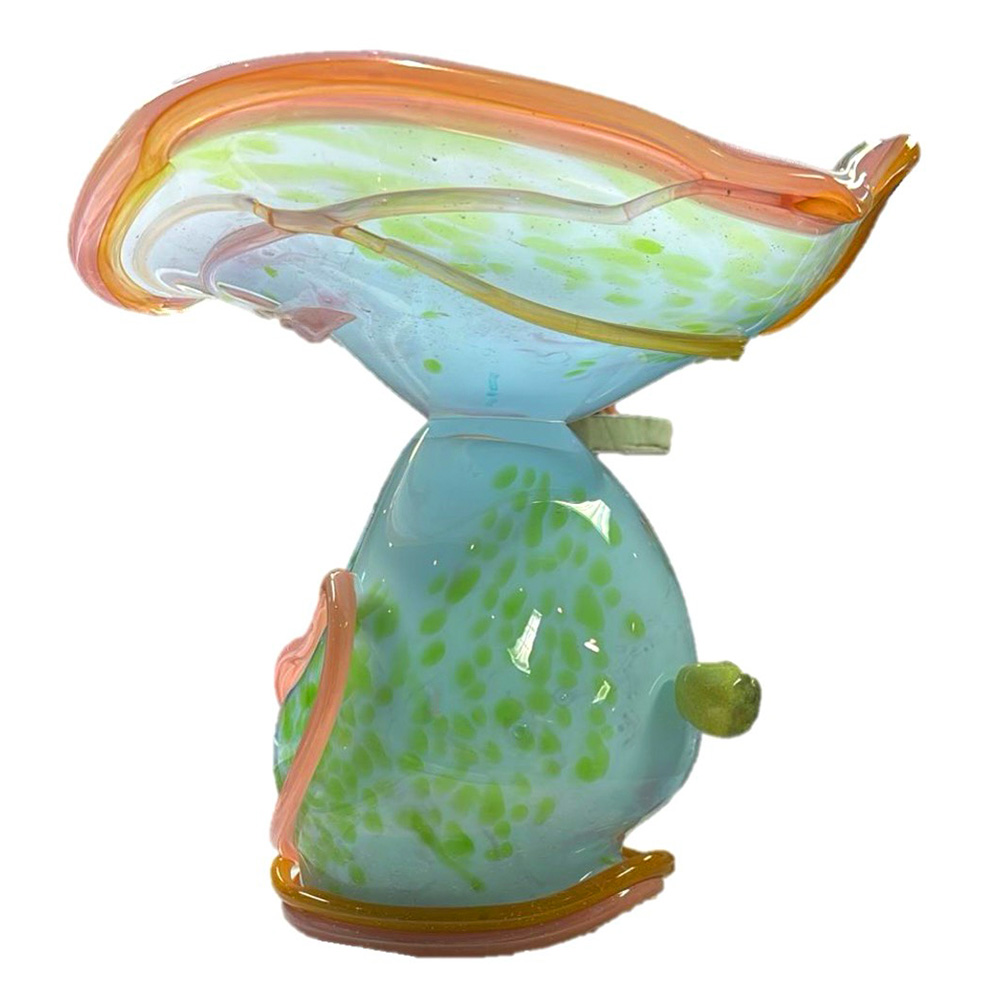
Size 50 x 40 cm
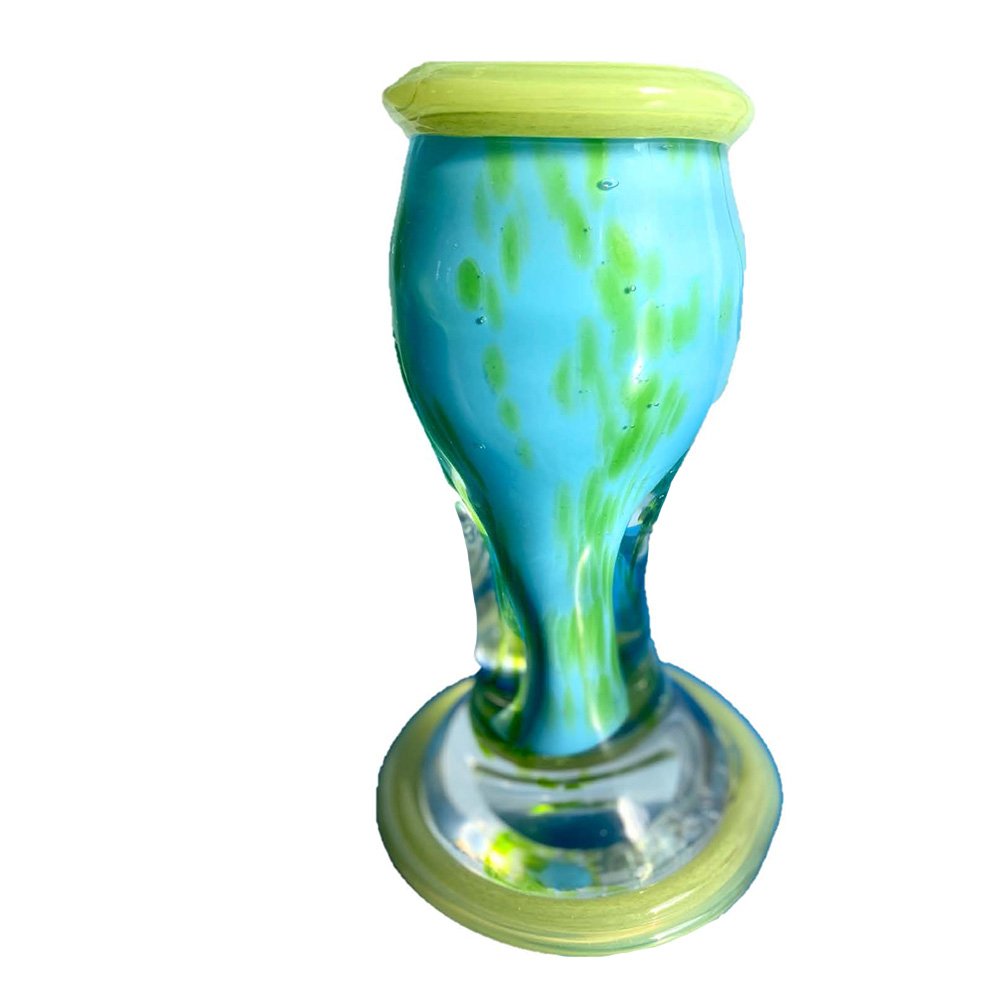
Size 25 x 15 cm
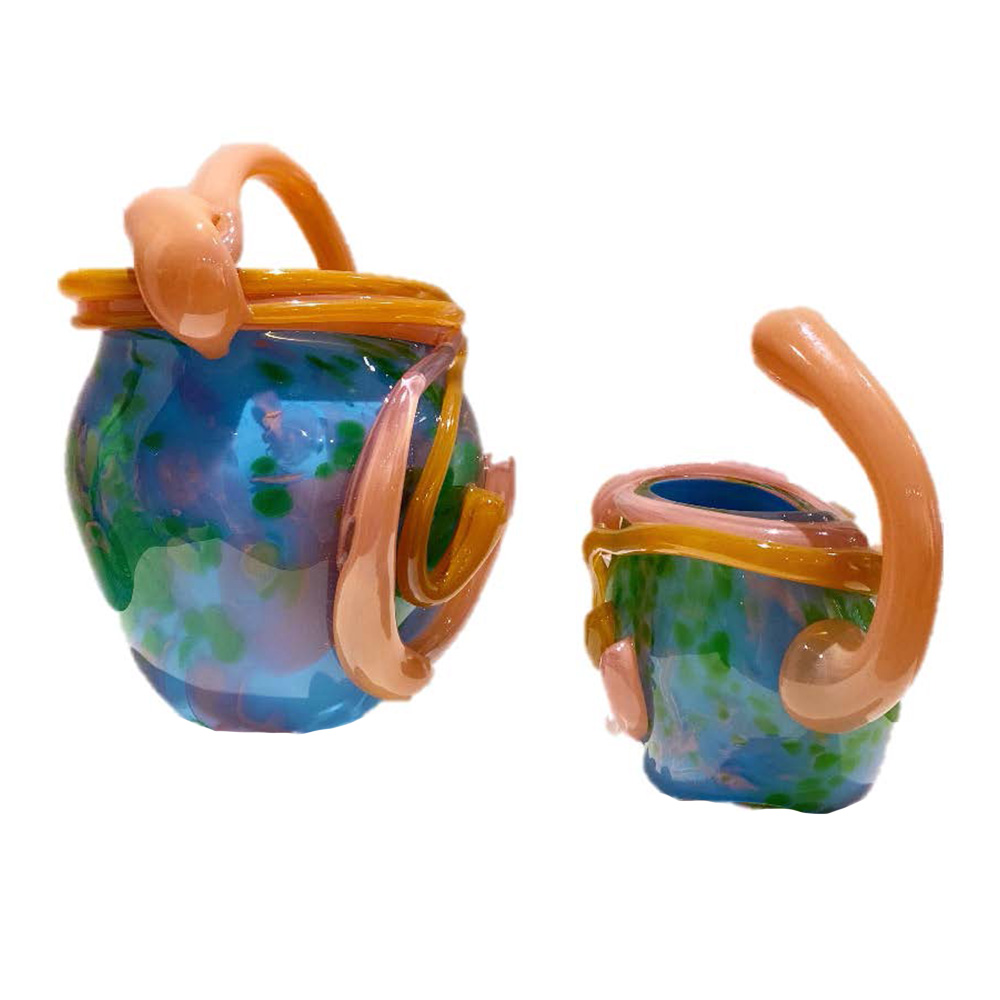
Size 30 x 25
Size 25 x 15
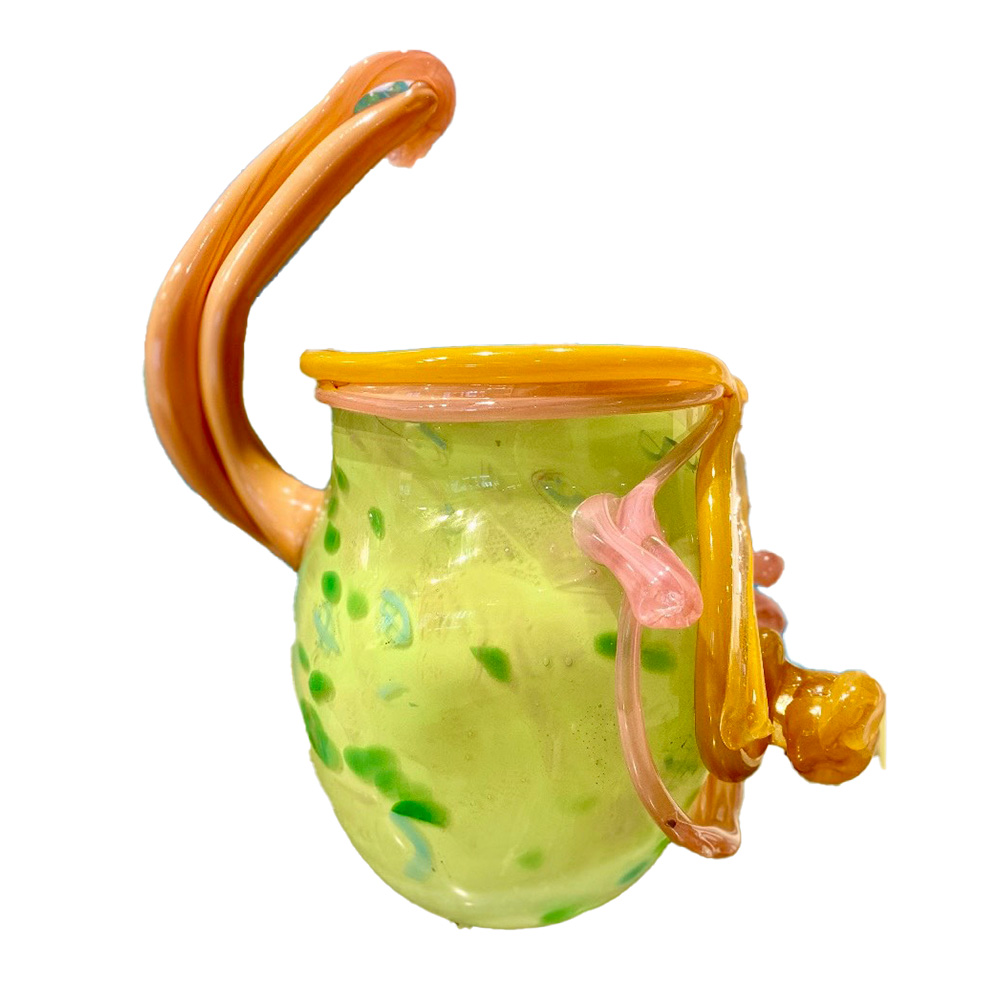
Size 50 x 40 cm

Textile stools – Tufted and handwoven with intricate passementerie structures.
Sizes: 42 x 50 x 95 cm, 42 x 50 cm, and 40 x 35 cm (3 unique pieces available)
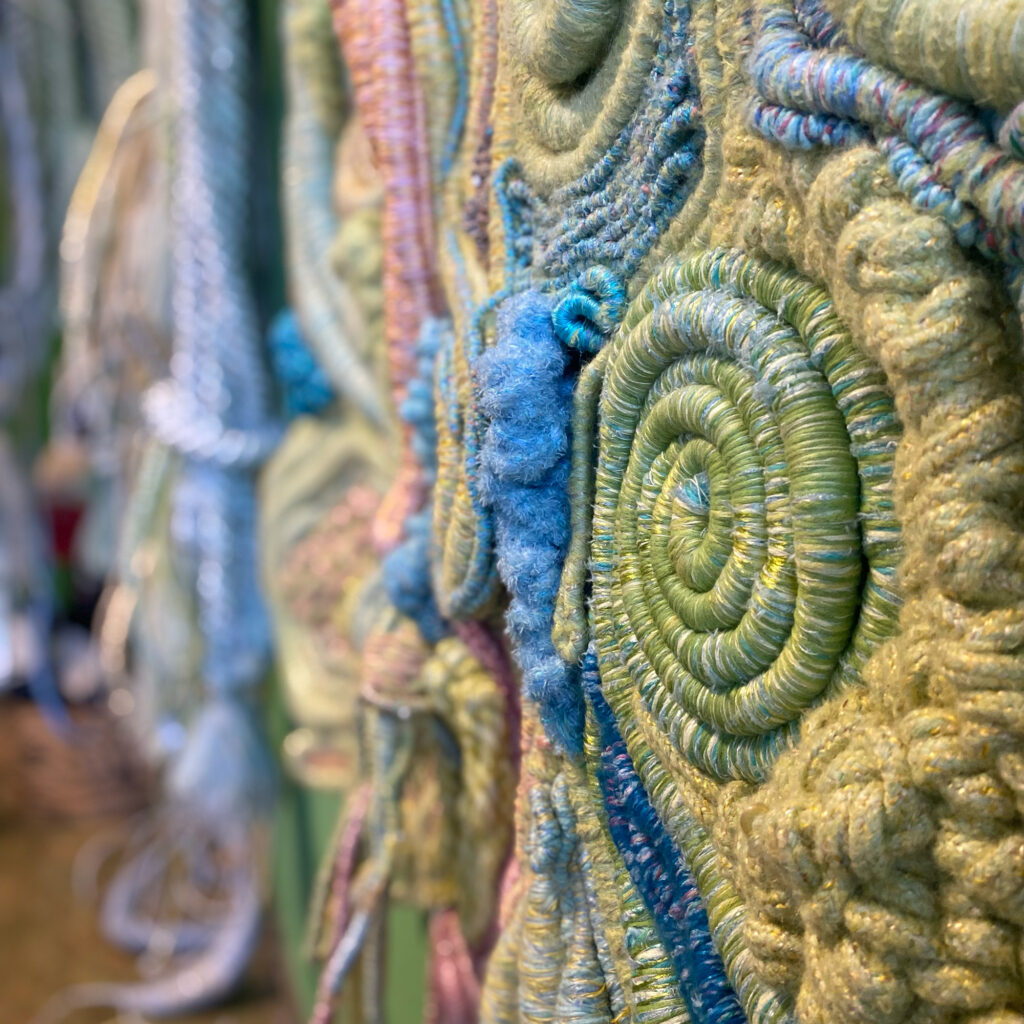
Textile wall hanging – Handmade with intricate knotting, ropes, and braids.
Size: 130 x 110 cm (1 unique piece available)

Textile wall hanging – Crafted from remnant cotton, PET, wool, and handwoven ropes.
Sizes: 150 x 170 cm and 150 x 210 cm (2 pieces available)
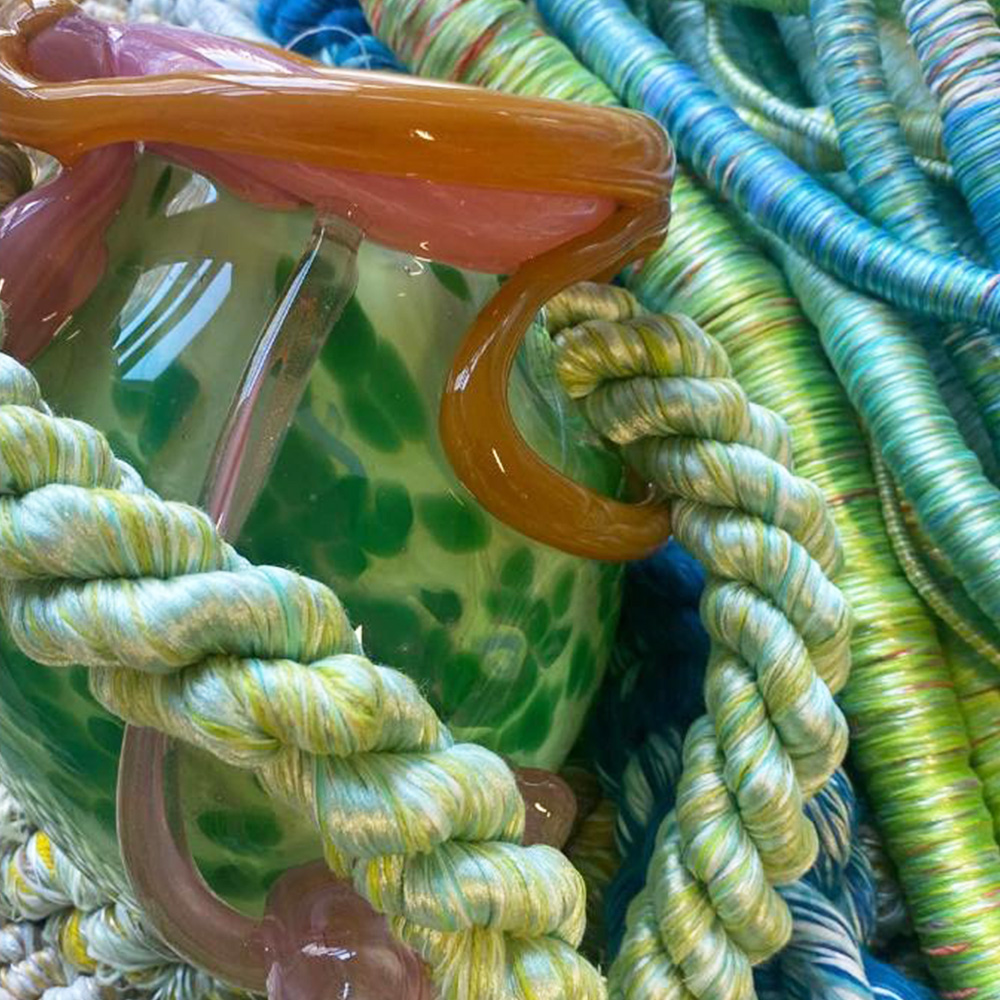
Textile wall hanging with glass sculpture elements – Handmade knotting, ropes, and braids incorporated with glass.
3 unique pieces, size in progress


